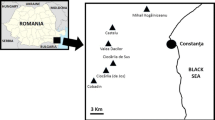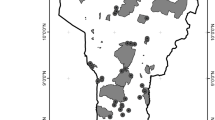A Reward for Patience and Suffering: Ethnomycology and Commodification of Desert Truffles among Sahrawi Refugees and Nomads of Western Sahara. This paper reflects on the role of ethnobiological knowledge and practices for refugees’ agency by focusing on the use and commodification of desert truffles among the Sahrawi refugees of Western Sahara. Historically, desert truffles of the genera Terfezia and Tirmania have been an important food and medicinal resource for Saharan nomads. Today, after becoming refugees following war and forced displacement, the Sahrawi still harvest truffles for their use values, but most are sold in the Algerian town of Tindouf. This paper addresses Sahrawi food, medicinal, and veterinary uses of desert truffles, and the on–going process of commodification sustained by a high international demand and the need for cash income. This process of commodification has both helped refugees to generate income and triggered a recovery of traditional knowledge around desert truffles. However, it has also led to increasing harvesting pressure and competition among truffle collectors, thus giving rise to the risk of unsustainable harvest levels.
Una recompensa a la paciencia y el sufrimiento: La etnomicología y la mercantilización de las trufas del desierto entre los nómadas y refugiados saharauis del Sáhara Occidental. Este artículo reflexiona sobre el papel de los conocimientos etnobiológicos para los refugiados, centrándose en el uso y la comercialización de trufas del desierto entre los refugiados saharauis del Sáhara Occidental. Las trufas del desierto de los géneros Terfezia y Tirmania históricamente han sido un recurso importante para los nómadas del Sahara. Hoy en día, tras la guerra y los desplazamientos forzados, convertidos en refugiados, los saharauis aún cosechan trufas por sus numerosas propiedades, aunque comercializan la mayor parte de la cosecha con la ciudad argelina de Tinduf, a fin de obtener algunos ingresos económicos. En el presente trabajo se aborda el uso alimentario, medicinal y veterinario de las trufas del desierto entre los saharauis, y su actual proceso de mercantilización gracias a la alta demanda internacional. Este proceso ayuda a los refugiados a realizar actividades que les generan un ingreso, al mismo tiempo que ha favorecido la recuperación de los conocimientos tradicionales en torno a la trufa del desierto. Asimismo, la comercialización de trufas ha dado lugar a un aumento de intensidad de la cosecha y a una competición entre cosechadores, abriendo la posibilidad de niveles de recolección insostenibles.






Similar content being viewed by others
Literature Cited
AAA. 1998. Code of ethics of the American Anthropological Association. http://www.aaanet.org/profdev/ethics/upload/ethicscode1998.pdf (15 March 2006).
Al-Koni, I. 2008. Gold dust. Arabia Books, London.
Alsheikh, A. M. and J. M. Trappe. 1983. Desert truffles: The genus Tirmania. Transactions of the British Mycological Society 81:83–90.
Awameh, M. S. and A. M. Alsheikh. 1979. Laboratory and field study of four kinds of truffle (kamah), Terfezia and Tirmania species, for cultivation. Mushroom Science 10:507–517.
Bathia, M. 2001. The Western Sahara under Polisario control. Review of African Political Economy 28:291–301.
Benchelah, A. C., H. Bouziane, M. Maka, and C. Ouahes. 2000. Fleurs du Sahara. Voyage ethnobotanique avec les Touaregs du Tassili. Ibis Press–Atlantica, Paris.
Bodeker, G., C. Neumann, P. Lall, and Z. Min Oo. 2005. Traditional medicine use and healthworker training in a refugee setting at the Thai–Burma border. Journal of Refugee Studies 18:76–99.
Brooks, N., I. Chiapello, S. Di Lernia, N. Drake, M. Legrand, C. Moulin, and J. Prospero. 2005. The climate–environment–society nexus in the Sahara from prehistoric times to the present day. The Journal of North African Studies 10:253–292.
Caro Baroja, J. 1955. Estudios Saharianos. Consejo Superior de Investigaciones Cientificas, Madrid, Spain.
Castree, N. 2003. Commodifying what nature? Progress in Human Geography 27:273–297.
Chatin, A. 1891. Terfas ou truffes d’Afrique et d’Arabie, genres Terfezia et Tirmania. Bulletin de la Société Botanique de France 38:59–64.
Crivello, G., E. Fiddian, and D. Chatty. 2006. Holidays in peace: Sahrawi children visit Spain. Forced Migration Review (FMR) 25:59–60.
Cunningham, A. B. 2001. Applied ethnobotany. People, wild plant use and conservation. Earthscan Publications Ltd., London.
Dedenis, J. 2005. La mobilité régionale de la société sahraouie des camps de réfugiés. Une ressource pour un mieux–vivre ? Master Thesis (in International Migrations and Interethnique Relations), Université de Poitiers, Poitiers, France. http://ykouzmine.free.fr/IMG/pdf/Master2_Dedenis_2005.pdf (24 May 2012).
Feeney, J. 2002. Desert truffles galore. Saudi Aramco World 53.
Fethi, N. 2009. Algerian truffles gain international fame. http://magharebia.com/en_GB/articles/awi/features/2009/04/20/feature–02 (3 June 2012).
Fortas, Z. and G. Chevalier. 1992. Effect of culture conditions on the mycorrhization of Helianthemum guttatum by three species of desert truffles of the genera Terfezia and Tirmania of Algeria. Canadian Journal of Botany 70:2453–2460.
Gast, M. 2000. Moissons du désert. Utilisation des ressources naturelles au Sahara Central. Ibis Press, Paris.
Gereffi, G., J. Humphrey, and T. Sturgeon. 2005. The governance of global value chains. Review of International Political Economy 12:78–104.
Gutiérrez, A., A. Morte, and M. Honrubia. 2003. Morphological characterization of the mycorrhiza formed by Helianthemum almeriense Pau with Terfezia claveryi Chatin and Picoa lefebvrei (Pat.) Maire. Mycorrhiza 13:299–307.
Harvey, P. and J. Lind. 2005. Dependency and humanitarian relief: A critical analysis. Humanitarian Policy Group, Overseas Development Institute, London.
Horst, C. 2006. Transnational nomads. How Somalis cope with refugee life in the Dadaab camps of Kenya. Berghahn Books, Oxford.
International Society of Ethnobiology. 2006. International Society of Ethnobiology Code of Ethics (with 2008 additions). http://ethnobiology.net/code–of–ethics/ (17 September 2011).
Kagan-Zur, V. and N. Roth-Bejerano. 2008. Desert truffles. Fungi 1:32–37.
Kaplinsky, R. 2000. Globalisation and unequalisation: What can be learned from Value Chain Analysis? Journal of Development Studies 37:117–146.
Khabar, L., L. Najim, M. Janex-Favre, and A. Parguey-Leduc. 2001. Contribution à l’étude de la flore mycologique du Maroc. Les truffes marocaines (Discomycètes). Bulletin trimestriel de la Société mycologique de France 117:213–229.
Lepp, H. 2009. Desert truffles—Middle East and Mediterranean. https://www.anbg.gov.au/fungi/case–studies/desert–truffles.html (18 January 2012).
Mandeel, Q. A. and A. A. Al-Laith. 2007. Ethnomycological aspects of the desert truffle among native Bahraini and non–Bahraini peoples of the Kingdom of Bahrain. Journal of Ethnopharmacology 110:118–129.
Ouali, M. 2006. Algerians are wild about terfez, the desert truffle! http://magharebia.com/en_GB/articles/awi/features/2006/04/30/feature–01 (28 May 2012).
Ozenda, P. 1991. Flore et Végétation du Sahara, 3e édition. CNRS, Paris.
Pieroni, A. and I. Vandebroek. 2007. Travelling cultures and plants. The ethnobiology and ethnopharmacy of migrations. Berghahn Books, Oxford, United Kingdom.
Rodríguez, A. 2008. Desert truffles. http://www.trufamania.com/desert–truffles.htm (3 June 2012).
San Martin, P. 2010. Western Sahara: The refugee nation. University of Wales Press, Cardiff, Wales.
Shavit, E. 2008. Truffles roasting in the evening fires: Pages from the history of desert truffles. Fungi 1:18–23.
Sitta, N. and M. Floriani. 2008. Nationalization and globalization trends in the wild mushroom commerce of Italy with emphasis on porcini (Boletus edulis and allied species). Economic Botany 62:307–322.
Soler, N., C. Serra, J. Escola, and J. Unge. 1999. Sahara Occidental: Pasado y presente de un pueblo. Universidad de Girona, Girona, Spain.
Steinmann, S. H. 1998. Gender, pastoralism, and intensification: Changing environmental resource use in Morocco. Yale Forestry and Environment Bulletin 103:81–107.
Taylor, F. W., D. M. Thamage, N. Baker, N. Roth-Bejerano, and V. Kagan-Zur. 1995. Notes on the Kalahari desert truffle, Terfezia pfeilii. Mycological Research 99:874–878.
Trappe, J. M., A. W. Claridge, D. Arora, and W. A. Smit. 2008a. Desert truffles of the African Kalahari: Ecology, ethnomycology, and taxonomy. Economic Botany 62:521–529.
———, ———, D. L. Claridge, and L. Liddle. 2008b. Desert Truffles of the Australian Outback: Ecology, ethnomycology, and taxonomy. Economic Botany 62:497–506.
Vermeylen, S. 2008. From life force to slimming aid: Exploring views on the commodification of traditional medicinal knowledge. Applied Geography 28:224–235.
Voeks, R. and J. Rashford. 2013. African ethnobotany in the Americas. Springer, New York.
Volpato, G., A. Ahmadi Emhamed, S. M. Lamin Saleh, A. Broglia, and S. Di Lello. 2007. Procurement of traditional remedies and transmission of medicinal knowledge among Sahrawi people displaced in southwestern Algeria refugee camps. Pages 245–269 in A. Pieroni and I. Vandebroek, eds., Traveling cultures and plants: The ethnobiology and ethnopharmacy of migrations. Berghahn Books, Oxford, United Kingdom.
———, P. Kourková, and V. Zelený. 2012. Healing war wounds and perfuming exile: The use of vegetal, animal, and mineral products for perfumes, cosmetics, and skin healing among Sahrawi refugees of Western Sahara. Journal of Ethnobiology and Ethnomedicine 8:49.
Weller, S. C. 1998. Structured interviewing and questionnaire construction. Pages 365–409 in H. R. Bernard, ed., Handbook of methods in cultural anthropology. Altamira Press, Walnut Creek, California, USA.
Winkler, D. 2008. Yartsa Gunbu (Cordyceps sinensis) and the fungal commodification of Tibet’s rural economy. Economic Botany 62:291–305.
Yamin-Pasternak, S. 2011. Ethnomycology: Fungi and mushrooms in cultural entanglements. Pages 213–230 in E. N. Anderson, D. Pearsall, and E. Hunn, eds., Ethnobiology. John Wiley & Sons, Inc, Hoboken, New Jersey, USA.
Acknowledgements
We are very thankful to many Sahrawi and Sahrawi truffle collectors for the patience and kindness that they have shown during the interviews. We thank the Italian NGO Africa 70 for logistical support and cooperation. Personal thanks go to the director of the Veterinary Services of the SADR (Sahrawi Arab Democratic Republic), Saleh Mohamed Lamin Saleh, and to Sidahmed Fadel. Thanks to Professor Patricia Howard for her comments and revisions to the manuscript. Funds were granted to Gabriele Volpato by Ceres Research School of Wageningen University, The Netherlands, as part of his Ph.D. research on historical and contemporary Sahrawi nomadism and ethnobiological knowledge.
Author information
Authors and Affiliations
Corresponding author
Additional information
Submitted 16 November 2012; Accepted 3 May 2013.
Rights and permissions
About this article
Cite this article
Volpato, G., Rossi, D. & Dentoni, D. A Reward for Patience and Suffering: Ethnomycology and Commodification of Desert Truffles among Sahrawi Refugees and Nomads of Western Sahara. Econ Bot 67, 147–160 (2013). https://doi.org/10.1007/s12231-013-9234-7
Received:
Accepted:
Published:
Issue Date:
DOI: https://doi.org/10.1007/s12231-013-9234-7




